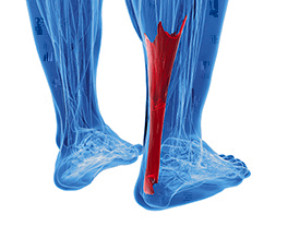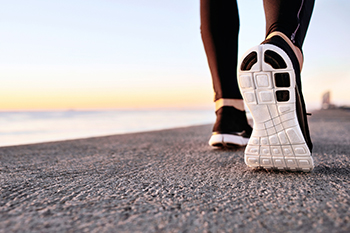Items filtered by date: March 2023
Causes of Foot Pain During Pregnancy

During pregnancy many women begin to experience foot pain, largely the result of weight gain and a change in the structure of their feet. Among the causes of foot pain are edema, footwear, overpronation, and plantar fasciitis. Edema, or swelling, in the lower legs, ankles, and feet is one of the most common side effects in pregnant women. It is caused by hormonal changes and a less efficient circulatory system which can cause excess fluid to build up in the extremities. Drinking more water and reducing salt intake can help to alleviate the symptoms, along with keeping the legs elevated as often as possible. Foot pain also may be caused by wearing the wrong size shoes. Ligament changes can cause the feet to grow in size. It’s a good idea to measure the feet and find shoes that fit in width as well as length. During pregnancy many women experience a flattening of the foot arches, which can result in overpronation. This change in gait and pressure on the foot can result in foot pain. It also can cause heel pain from inflammation of plantar fascia, the band of tissue on the sole of the feet. For help in overcoming foot pain while pregnant, it is suggested that you consult a chiropodist for treatment options.
Pregnancy can affect your feet in many ways, often causing pain or discomfort, as well as reduced mobility. If you are pregnant and experience foot pain, please consult with Chiropodist Stephanie Poupore from North Bay Foot & Ankle. Our clinician will assess your condition and provide you with quality foot and ankle treatment.
During pregnancy, your belly isn’t the only part of your body swelling. The whole body may experience swelling, especially in the feet and ankles. Since they carry the weight of both your body and the baby’s, caring for your feet during pregnancy is very important.
Common Foot Conditions During Pregnancy
Various foot conditions can develop during the course of a pregnancy, including:
-
Swelling of the feet and ankles
-
Fallen arches, leading to acquired flat feet
-
Plantar fasciitis
-
Aching, sore feet
-
Changes in the toenails
Caring for the Feet During Pregnancy
Some things that you can do to help maintain the health of your feet during pregnancy include:
-
Wearing comfortable shoes
-
Resting and elevating your feet
-
Icing sore areas, such as the arch
-
Keeping your toenails trimmed
-
Soaking and massaging the feet
If you have any questions, please feel free to contact our office located in . We offer the newest diagnostic and treatment technologies for all your foot care needs.
Causes of Achilles Tendon Pain

The Achilles tendon connects the heel bone to the calf muscles at the back of the ankle. This tendon supports the calf and ankle during movement. A tear in this tendon can be partial or complete and can happen from overuse. Taking on a new sport or suddenly increasing exercise intensity can lead to Achilles tendon injuries. Other reasons for such injuries include wearing ill-fitting footwear, aging, and being overweight. When one tears or ruptures their Achilles tendon, they may hear a popping sound and will often feel pain in the heel or back of the leg. The pain will likely worsen when moving the foot or ankle and it will be difficult to walk. Achilles tendonitis is when the Achilles tendon becomes inflamed. This can either be “non-insertional” where the fibers in the middle of the tendon become irritated or “insertional” where the fibers in the lower tendon become inflamed. Tendinitis can develop gradually when there is too much strain placed on the Achilles tendon. If symptoms are severe and disruptive or when one believes they have ruptured their Achilles tendon, seeing a chiropodist for treatment is strongly suggested.
Achilles tendonitis is a common injury of the Achilles tendon, a band of fibrous tissue that runs along the back of the lower leg. The Achilles tendon can also rupture, making it impossible to lift the foot. If you are suffering from heel or calf pain, please consult with Chiropodist Stephanie Poupore from North Bay Foot & Ankle. Our clinician can help you maintain the health of your lower limbs and your mobility.
Causes of Achilles tendon injuries include:
-
Repetitive stress or overuse
-
Sudden increase in activity levels
-
High impact injury
-
Calf muscle tightness or weakness
-
Altered foot biomechanics
-
Heel bone spurs
-
Underlying medical conditions that weaken the tendon
Symptoms of an Achilles tendon injury include:
-
Heel and calf pain that worsens following exercise
-
Chronic heel and calf pain
-
Sudden pain in the back of the ankle or calf
-
A popping or snapping sensation
-
Thickened lump in the Achilles tendon
-
Ankle and calf stiffness
-
Decreased range of motion in the affected foot
-
Swelling
-
Difficulty walking
Treatment
-
Resting the affected leg
-
Applying ice
-
Compressing the foot and ankle
-
Elevating the injured leg
-
Wearing orthotics
-
Low impact exercises
-
Stretches
-
Strengthening exercises
-
Non-steroidal anti-inflammatory medications
-
Cortisone injections
-
Surgery, if the tendon is ruptured
Achilles tendon injuries can be very painful and lead to reduced mobility if left untreated. If you have any questions, please feel free to contact our office located in . We offer the newest diagnostic and treatment technologies for all your foot care needs.
Do You Suffer From Painful Feet?
Walking and Running Shoes, What’s the Difference?

If you walk for exercise, it’s a good idea to check out which kind of shoe is best for you. However, according to experts, if running is your main exercise activity, another type of shoe is recommended. The four main differences between walking and running shoes are the sole, the heel, motion control, and weight. Walking shoes are more flexible, and running shoes are stiffer, in addition to having a thicker wedged heel for extra cushioning. The opposite is true for walking, as thicker heels can invite shin splints or tendonitis. They may also cause you to trip while taking a step. With running shoes, stability is a major concern, and not as much with a walking shoe. In general, walking shoes are heavier than running shoes, which need to be lightweight so as not to hinder speed. With either type of shoe, experts believe a proper fit is essential. Avoid shoes that are too tight, too big, too wide, or too narrow. If you would like more information on the proper shoe for your activity, it is suggested that you consult with a chiropodist.
Finding the right shoes can sometimes be a major hassle, especially if you intend to work out in them. There are shoes on the market designed specifically for running and walking, but it can be difficult to differentiate between the two and find the right shoes for you. If you’re having trouble finding the right shoes, please consult with Chiropodist Stephanie Poupore from North Bay Foot & Ankle. Our clinician can help you maintain the health of your lower limbs and your mobility.
What are the differences between running and walking shoes?
These two types of shoes vary along several parameters.
-
Cushioning: Runners need more cushioning in the heel and forefoot areas of the shoe, while walkers can get away with less cushioning.
-
Heel height: Runners need a higher heel to provide them with stability, but the ideal height of the heel for runners varies depending on their running gait. Walkers generally don’t need a built-up heel.
-
Heel flare: Flared heels can help provide extra stability for runners with certain gaits, while walkers may benefit from a flared heel to control the motion of their foot.
-
Flexibility: Both runners and walkers need shoes that are flexible.
For more information about the differences between walking and running shoes, and to figure out which shoes may be right for you, please consult with a chiropodist. Feel free to contact our office located in . We offer the newest diagnostic and treatment technologies for all your foot care needs.
Treatment for an Ingrown Toenail

An ingrown toenail most often involves the big toe, which becomes painful as the nail grows into the surrounding skin. The discomfort is generally caused by pressure from the toenail rubbing against the inside of a shoe or boot. That action then produces redness and swelling. People with more curved toenails may experience recurring bouts with this condition. Treatment for an ingrown toenail is dependent upon the severity of the problem and whether or not it has become infected. An infected toenail may ooze fluid or pus. It is a good idea to seek treatment at the earliest sign of a problem. Keeping the toenails cut straight across is one way of preventing an ingrown toenail. Wearing open toed shoes or sandals while dealing with an ingrown toenail can help calm down the symptoms. However, in some cases, removal of all or part of the affected nail is required. If an ingrown toenail becomes infected, it is highly suggested that you seek help from a chiropodist who can treat both the infection and the nail itself.
Ingrown toenails may require medical attention. If you have significant pain or notice signs of infection from an ingrown toenail, please consult with Chiropodist Stephanie Poupore from North Bay Foot & Ankle. Our clinician will assess your condition and provide you with quality foot and ankle treatment.
What Is an Ingrown Toenail?
An ingrown toenail occurs when the edges of a toenail grow into the surrounding skin. The toenails of the big toe are usually affected, however, an ingrown toenail can happen on any toe. Sometimes, the area can become infected leading to potentially serious complications. The ingrown toenail may be caused by improper trimming of the toenail, wearing ill-fitting shoes, or injury to the nail.
Symptoms
The symptoms of an ingrown toenail include:
-
Pain
-
Swelling
-
Redness
-
Warmth
-
Pus or drainage from the affected nail or a fever may indicate an infection of the area.
Treatment
Treatment depends on the severity of the ingrown toenail. In less severe cases, home treatment may be adequate. Soaking the affected foot in warm water and gently lifting the nail from the skin with a piece of clean cotton can help. In more severe cases, you may need to use topical or oral antibiotics to treat an infection. Surgical removal of the ingrown toenail may be required if more conservative treatments fail.
Ingrown toenails may be prevented by wearing well-fitted shoes and properly trimming the toenails. Toenails should be trimmed straight across and not too short when using nail clippers.
If you have any questions, please feel free to contact our office located in . We offer the newest diagnostic and treatment technologies for all your foot care needs.

